Natural satellites astrometry
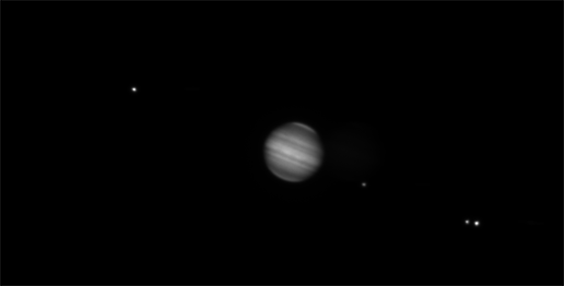
The natural satellites of the planets are fast bodies whose movement is complex: they undergo numerous gravitational perturbations, mutual, by their planet and their flattening, by the other planets and the Sun. Planet-satellite tidal forces create cumulative effects on motion. To model such movements, astrometric observations made over long periods are essential. With this in mind, researchers from the Pegase team organize a continuous observational work of the various satellite systems. Astrometric observations are regularly performed either by team members at the OHP, Pic du Midi or ESO, or in collaboration with other partner teams such as our Brazilian colleagues from the Rio Observatory or those from USNO at Washington DC and Flagstaff.
Current observations concern in particular the following bodies:
- Jupiter’s Galilean satellites: in addition to the observations of mutual phenomena, astrometric observations are made at OHP by staking of images. The difficulty comes from the high brightness of the satellites hindering the measurement of much fainter reference stars
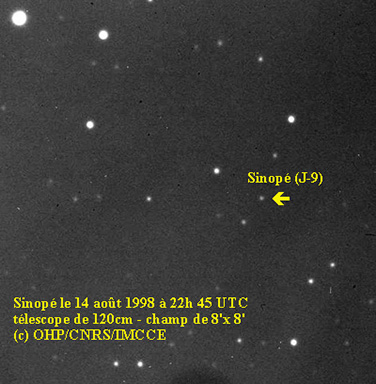
- The internal satellites of Jupiter: Amalthea and Thebe are now observed at the Pic du Midi thanks to the quality of the site and the use of a mask on the planet (Robert et al. 2017)
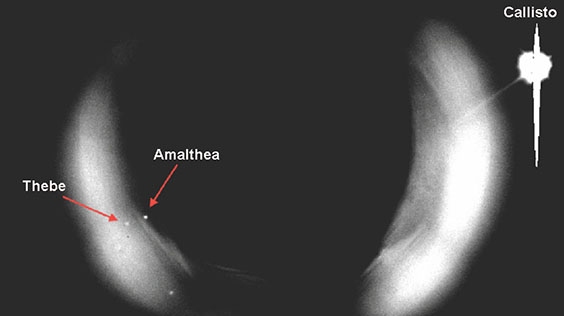
- The outer satellites of Jupiter and Saturn. A decade-long campaign in collaboration with our Brazilian colleagues has recently ended (Gomez-Junior et al. 2015)
- Saturn’s main satellites: we reduced observations of the Cassini spacecraft in collaboration with our colleagues of the Queen Mary University of London (Tajeddine et al. 2015)
- Saturn’s internal satellites: we exploit observations made at Flagstaff by our USNO colleagues (Robert et al. 2016)
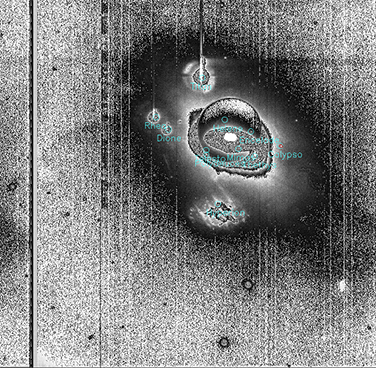
- Uranus satellites: observations at the OHP supplemented by observations at ESO and data mining in the ESO archives allow us to add to our database
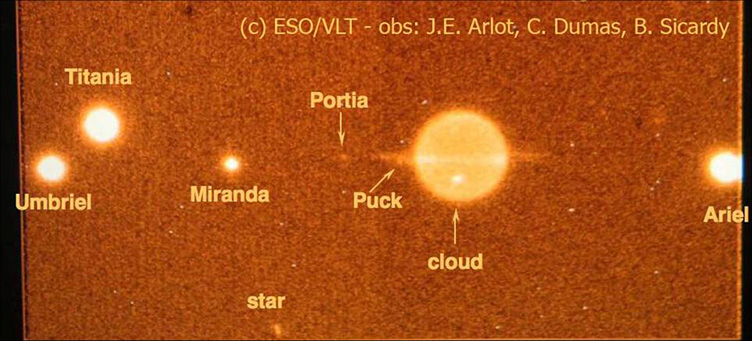
It should be noted that space probes only provide astrometric observations over short periods of time and must be supplemented by ground-based observations. In addition, our observations make it possible to maintain quality ephemerides which will be used in particular within the framework of the future JUICE mission. The recent ESPaCE European program has allowed us to reduce a large number of observations and the reference catalog of the Gaia project will allow a further reduction of observations with greater precision, even for older observations (NAROO project).
The future of ground-based observations
Space probes observations and observations from the satellite Gaia are they competing or complementary with ground-based observations? We organized a workshop in Meudon in 2015 in order to discuss about the observations to be made in the near future. Information on the workshop is available here and the proceedings here.
Last update Friday 19 June 2020